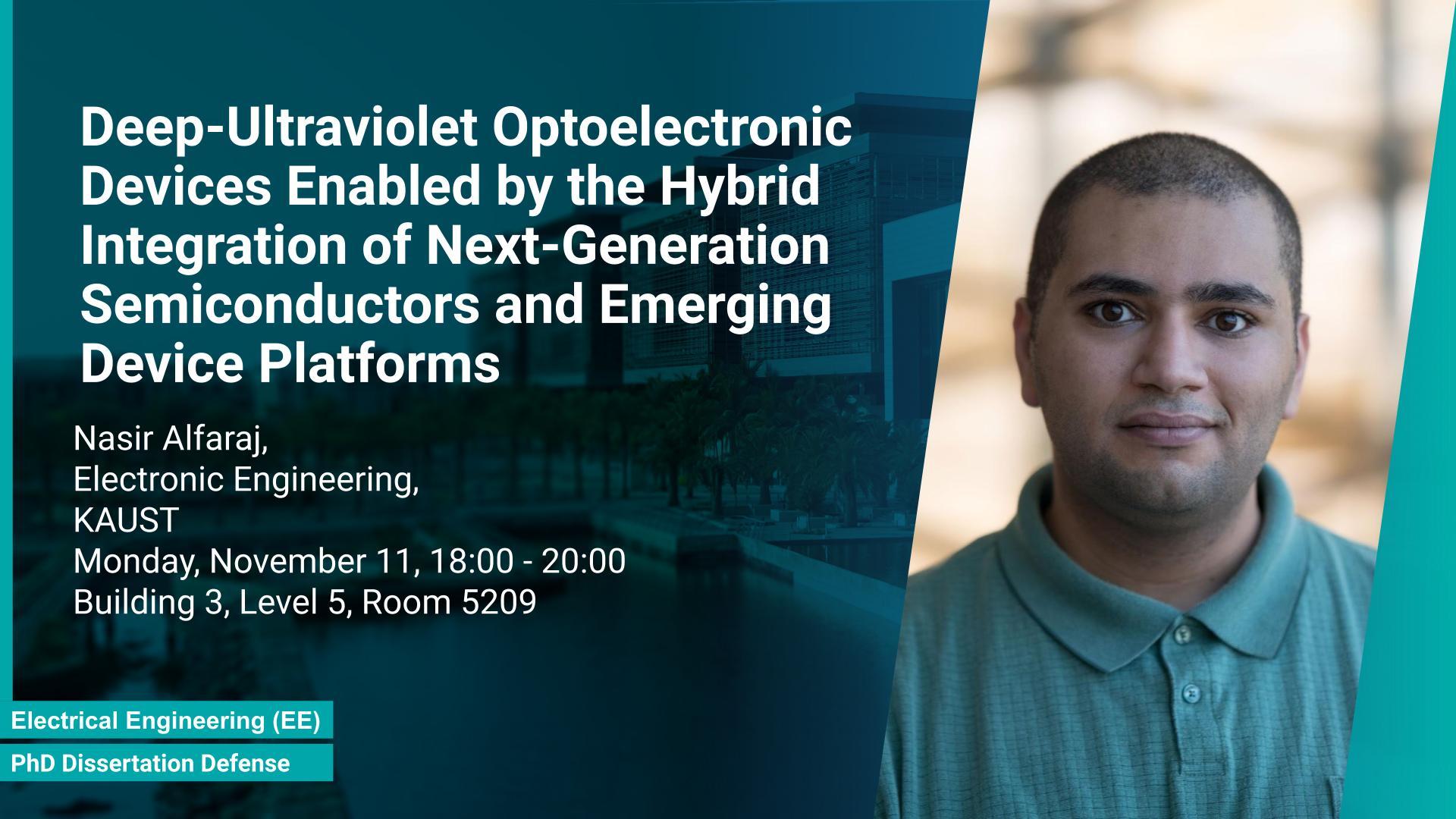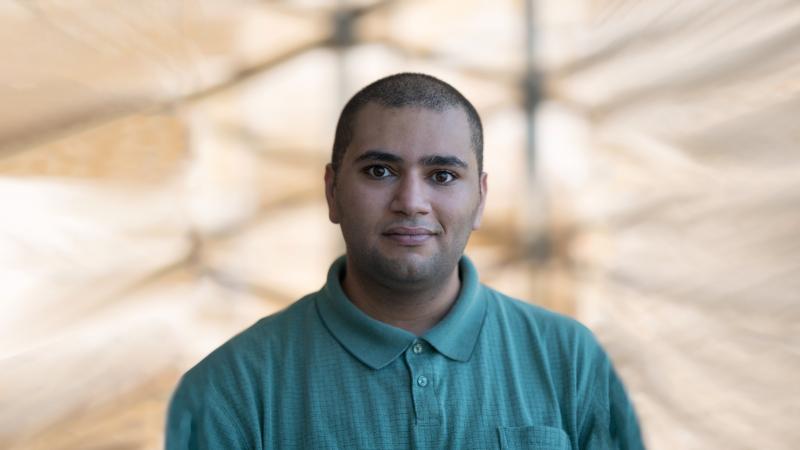Event Start
Event End
Location
Abstract
In this dissertation, the design and fabrication of deep-ultraviolet photodetectors, based on gallium oxide and its alloys, through the heterogeneous integration with metallic and other inorganic materials is investigated. The crystallographic properties of grown oxide films formed directly and indirectly on silicon, magnesium oxide, and sapphire are examined, and the challenges that hinder the realization of efficient and reliable deep-ultraviolet photodetectors are elaborated on. I provide an overview of aluminum nitride, gallium oxide, sapphire, and silicon substrates as platforms for deep-ultraviolet optoelectronic devices, in which I elaborate on the challenges associated with using sapphire as a platform for efficient deep-ultraviolet devices and detail advancements in device growth and fabrication on silicon and magnesium oxide substrates.
Brief Biography
Nasir's research investigated the design and clean-environment fabrication of solid-state and optoelectronic devices, including field-effect transistors and light-emitting diodes. His research expertise spans the areas of flexible electronics; optoelectronic device growth, fabrication and characterization; and free-space optical communication. His published and in-progress work covers various aspects of semiconductor device physics, design, material growth, thin film deposition, device fabrication and operation of III-nitride-based UV and visible range LEDs, lasers, and photodetectors. Currently, he is using pulsed laser deposition to deposit III-oxide materials that will aid in the realization of high-efficiency deep-UV photodetectors.


